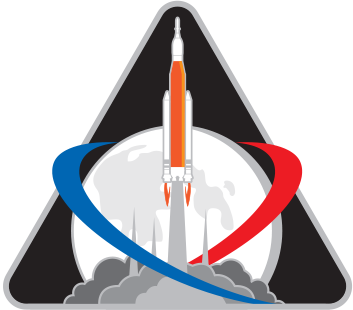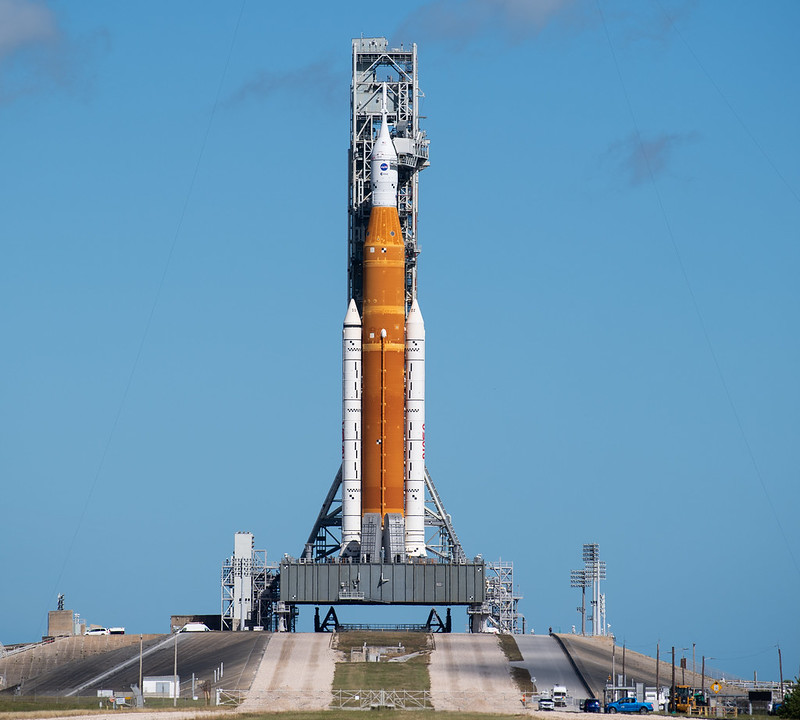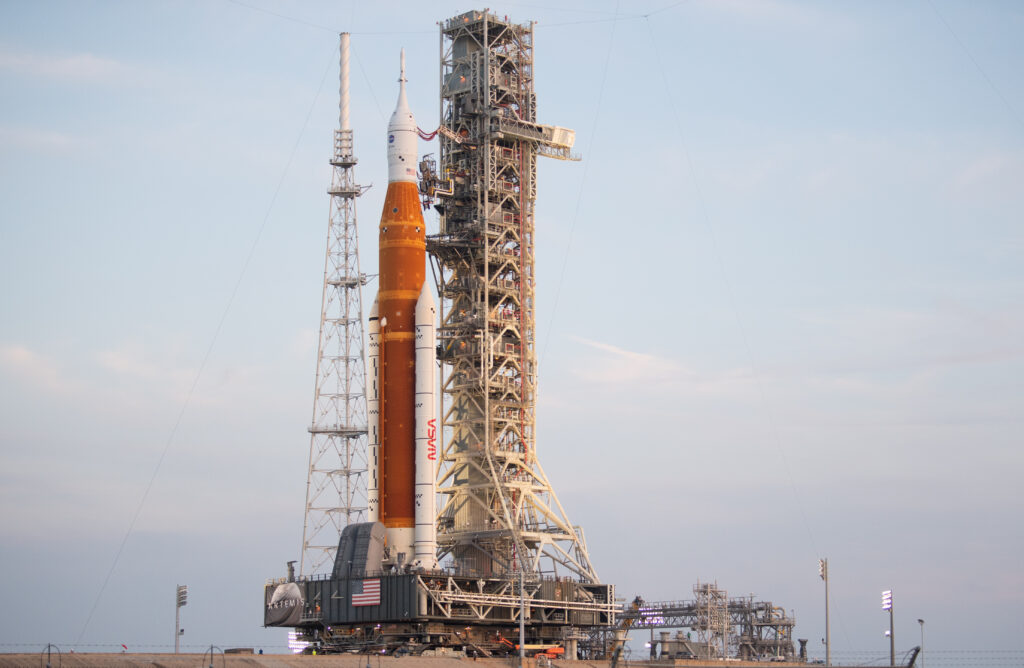Artemis I
On Artemis I, engineers are testing several aspects of the Orion spacecraft needed for deep space missions with crew, including its highly capable propulsion system to maintain its course with precision and ensure its crew can get home, communication and navigation systems to maintain contact with the ground and orient the spacecraft, systems and features to handle radiation events, as well as a heat shield that can handle a high-speed reentry from the Moon. Both distance and duration demand that spacecraft must have systems that can reliably operate far from home, be capable of keeping astronauts alive in case of emergencies and still be light enough that a rocket can launch it.
Introduction
- Uncrewed test flight to provide a foundation for deep space exploration.
- Uncrewed lunar orbit and return to the Earth.
- Testing of the new heat shield.
- Launch pad 39B.
- Height of the rocket is 112 meters (32 floors).
- The SLS (Block 1) configuration has 8.8 Million pounds of thrust and is the most powerful rocket in the world.
- Boosters in 5 segments (Space Shuttle had 4).
- Orion will go further than any spacecraft for humans has ever flown.
- Mission is over a million miles (to the moon and back and all kinds of orbits around the Moon testing the spacecraft).
- Duration of the Artemis I mission is 42 days.
- Orion will come back faster and hotter than any spacecraft has before at 32 times the speed of sound: Mach 32 (39.000 km/hour). The Space Shuttle was Mach 25 (30.000 km/hour).
- It is going to dip in to the atmosphere and bleed off some of the speed before it is starts decending through the atmosphere.
- The heat shield of Orion is built so that it will stand the hotter environment as it is coming in at Mach 32. Coming back from Mars it might be Mach 36 (44.000 km/hour).
- The heat shield will slowdown Orion to 300 miles/hour before the parachutes are deployed.
- The parachute system includes 11 parachutes. Embedded in several parachutes are pyrotechnic riser cutters, which use fuses set to ignite at specific times and push blades through bulletproof materials to sever the lines at precise moments and allow the parachutes to unfurl to complete the deployment sequence. Within 10 minutes of descent through Earth’s atmosphere, everything must deploy and assemble itself in a precise sequence to slow Orion and its crew for a safe splashdown in the ocean. The parachute system also must be able to keep the crew safe in several failure scenarios, such as mortar failures that could prevent a single parachute from deploying, launch aborts, or other conditions that produce loads close to or exceeding the maximum material capability.
Objectives
- Demonstrate re-entry with the heat shield.
- Demonstrate the vehicle in flight environment: Launch, propulsion, lift off, max Q, seperation events, communication and navigation via Deep Space Network (DSN), through the van Allen Belt and in deep space high radiation environment.
- A Van Allen radiation belt is a zone of energetic charged particles, most of which originate from the solar wind, that are captured by and held around a planet by that planet’s magnetosphere. Earth has two such belts, and sometimes others may be temporarily created. The belts are named after James Van Allen, who is credited with their discovery. Earth’s two main belts extend from an altitude of about 640 to 58,000 km above the surface, in which region radiation levels vary.
- Retrieve the spacecraft with high precicion avionics aboard, retrieving data from the backout period with the peak heat and plasma.
- Payload objectives:
- 10 cube sats, 25 pounds each. For research at lower costs but higher risks in deep space.
- 3 torso’s. See NASA astronauts
- Voice activated virtual assistent (named Callisto, Artemis hunting companion).
Testflight
- Artemis I is a test flight.
- Maximum stress will be put on the system to collect maximum of data before we bring humans in space with the SLS.
- Stress is caused by the duration of the flight. System is designed for 21 active days but will be pushed to 42 days active days.
- Greater risk of being hit by a micro meteoriet.
- Heatshield has about 100 instruments to collect data.
- Optical NAV will be used (normaly not in use, backup only)
- In case of a necessary mission change or a flight abort situation the collecting and saving of the data from the heatshield will be leading
- Abort criteria are different from a normal flight.
Footnote
- Sources: Aerospace dashboard, funkystuff.org
- Outgoing: NASA
- Keywords:



